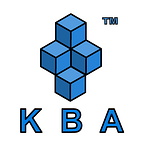Beyond Bitcoin: Navigating Through the Landscape of Altcoins
By Arya VN, Content Writer, Kerala Blockchain Academy
If you are interested in cryptocurrencies, you have already heard about Bitcoins. Since its introduction in 2008, Bitcoin has inspired an explosion of other cryptocurrencies. These ‘alternative’ cryptocurrency coins — altcoins — now number more than 5,000. An altcoin is a portmanteau of alternative and coin, referring to all other cryptocurrencies besides Bitcoin.
In this blog, we’ll delve into the fascinating world of altcoins, exploring what they are, how they differ from Bitcoin, and why they matter in the crypto landscape.
What are Altcoins?
Altcoins, short for alternative coins, refer to any cryptocurrency other than Bitcoin. Since the launch of Bitcoin, thousands of altcoins have sprung into existence, each with its unique characteristics, goals, and technology. These coins serve different purposes, from enhancing privacy and security to enabling smart contracts and decentralised applications (DApps). Litecoin was the first Altcoin to evolve from Bitcoin in 2011. It used Scrypt, an alternative Proof-of-Work consensus mechanism of Bitcoin. Litecoin was energy-intensive and was quicker than the SHA256 Proof-of-Work consensus mechanism. Some of the popular Altcoins are Ethereum (ETH), Binance Coin (BNB), XRP (XRP), Dogecoin (DOGE), Litecoin (LTC), Polkadot (DOT), TRON (TRX) and Solana (SOL).
Diversity in Functionality
Bitcoin might be the pioneer, but it’s just the tip of the iceberg. Altcoins — the Bitcoin-forked alternatives offer diverse features, functionalities, and use cases, catering to various niches within the crypto market.
One of the most compelling aspects of altcoins is their diverse functionality. While Bitcoin primarily serves as a digital store of value and a medium of exchange, altcoins often focus on specific use cases or innovations. For example, Altcoins are often categorised based on the nature of their transactions. For example,
- Privacy Coins: Privacy-focused altcoins like Monero (XMR) and Zcash (ZEC) prioritise anonymity and fungibility by implementing advanced cryptographic techniques such as zero-knowledge proofs and ring signatures.
- Stablecoins: Designed to minimize price volatility, stablecoins like Tether (USDT), USD Coin (USDC), and Dai (DAI) are pegged to fiat currencies like the US dollar or assets like gold, providing stability and facilitating seamless trading and remittance.
- Utility Tokens: Many altcoins serve as utility tokens within specific ecosystems or platforms. For instance, Binance Coin (BNB) powers transactions on the Binance exchange and offers discounts on trading fees, while Filecoin (FIL) incentivises storage providers on the decentralized storage network it supports.
- Security Tokens: Altcoins are also classified as Security Tokens, which represent ownership or participation in a real-world asset, such as shares in a company, real estate, or commodities. In 2021, Exodus turned out to be the first digital security asset.
Pros and Cons
Altcoins are designed to address the limitations of existing cryptocurrencies. Their diversity and potential for survival have made them appealing to many investors. However, their lower popularity and market capitalisation induce risks. They are less liquid than Bitcoin, and factors like unclear use cases, scams, developer exits, or waning community interest threaten their viability.
As of the first quarter 2024, Bitcoin maintains over 50% of the crypto market share, solidifying its reputation as a reliable and trustworthy cryptocurrency. Investors often need help to identify the practical uses of various altcoins, leading to reduced trading volumes for many of them. Research is critical to identifying potential and underlying risk factors, such as scams, and making informed investment decisions.
Challenges Behind
- Volatility: Altcoins are notorious for their price volatility, with values often subject to rapid fluctuations driven by market sentiment, regulatory developments, and technological advancements. For example, Meme Coins.
- Security Concerns: Not all altcoin projects are created equal, and some may be vulnerable to security breaches, hacks, or scams. Investors should conduct thorough due diligence before investing in any altcoin project.
- Regulatory Uncertainty: The regulatory landscape surrounding cryptocurrencies is constantly evolving, with governments worldwide grappling with classifying and regulating these digital assets. Regulatory changes can impact certain altcoins’ viability and legality and associated activities.
- Market Saturation and Competition: With thousands of altcoins vying for attention and investment, standing out in the crowded crypto market can be challenging. Altcoin projects must demonstrate real-world utility, innovation, and sustainability to attract users and investors.
Looking Ahead
Despite the challenges, altcoins continue to innovate and evolve, pushing the boundaries of what’s possible in cryptocurrency. As blockchain technology matures and adoption grows, altcoins will likely play an increasingly significant role in reshaping industries, disrupting traditional business models, and democratising access to different services globally. While Bitcoin remains the flagship cryptocurrency, altcoins can offer unique opportunities for innovation, experimentation, and investment in parallel. Altcoins offer a more affordable entry point than Bitcoins, and these lower-priced cryptocurrencies can help mitigate investment risk. However, navigating this complex landscape requires careful research, risk management, and a long-term perspective. It is, therefore, crucial to conduct thorough market research to understand the tokenomics of Altcoins.
